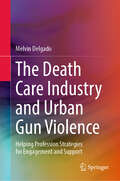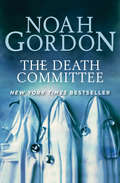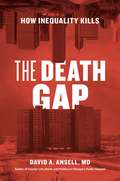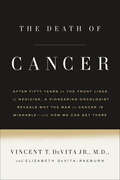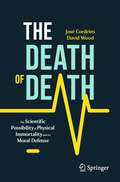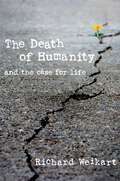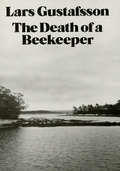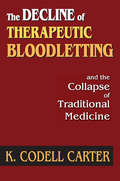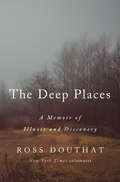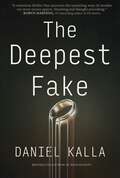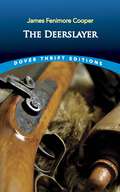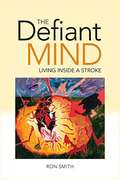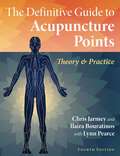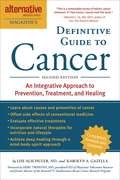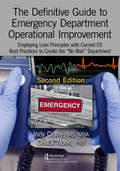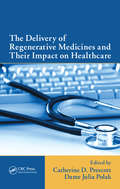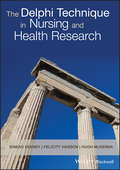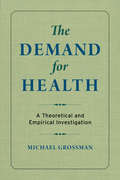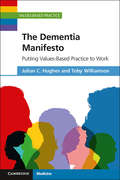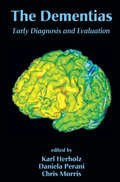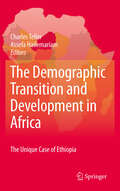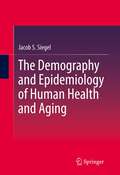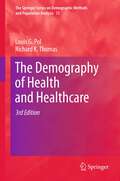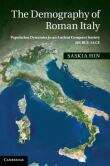- Table View
- List View
The Death Care Industry and Urban Gun Violence: Helping Profession Strategies for Engagement and Support
by Melvin DelgadoThis book provides a unique foundation upon which to view how the involvement of the death care sector offers a potential route to take in practice and research in reaching urban communities of color dealing with gun-related deaths. Gun violence in the United States is a salient national problem with virtually no day that goes by without it occurring. Where gun violence occurs, in turn, must be examined to facilitate understanding of how context influences the significance of the shooting. In the case of this book, the context is urban and death care sector (funeral homes, cemeteries, and houses of worship). Understanding how these settings shape public reactions help inform us as to how best to address this social and public health problem in the nation's urban centers and its consequences for communities. The book addresses five interrelated goals that weave together a variety of themes to produce a vision and guidance needed for a new practice arena: (1) ground readers in the latest statistical information on urban gun violence in this country; (2) review existing approaches to preventing and intervening in community gun violence with a focus on cities; (3) uplift the importance of the death care industry in meeting the needs of families and friends of gun victims. Attention is also paid to how funeral homes have expanded their vision of services to aid their community; (4) provide readers with details and insights into how to develop collaborative projects with systems of care through a series of case illustrations; and (5) put forth community practice, education, and research recommendations for how best to prepare future practitioners wishing to work with the death care sector on other related community issues to better serve urban communities. The Death Care Industry and Urban Gun Violence is a must-read for community psychologists, social workers, public health practitioners, community educators, sociologists, community medical providers, criminologists, and urban planners, as well as academics and students in these fields. Policy makers will also find the book of interest.
The Death Committee
by Noah GordonAt Suffolk County General Hospital, three brilliant young men are brought together by their ambition and passionate dedication to life. But they work in the shadow of the Death Committee, a formidable hospital tribunal where doctors sit in judgment of their peers, deciding who is to blame when a death could have been prevented. During an unforgettable year of love and fear, failure and victory, the young doctors must face the crucial dramas and triumphs of hospital life.
The Death Committee
by Noah GordonThe New York Times–bestselling author delivers &“a big, authentic novel&” of the professional and personal challenges of three young doctors (The New York Times).Three young men from different backgrounds have graduated from medical schools and become surgical fellows at a leading teaching hospital in Boston. They learn to become surgeons, to communicate with patients and families, and to be observed and appraised by their peers and professors on daily rounds. And each month—sometimes with dry mouth and rapid pulse—each attends the meeting of the Mortality Conference, known to all as the Death Committee, which examines every patient loss for possible human error, in order to prevent it from happening again. How the Death Committee affects and is affected by the lives, loves, and ambitions of three new doctors is the theme of this intriguing and profoundly moving novel.
The Death Gap: How Inequality Kills
by David A. AnsellWe hear plenty about the widening income gap between the rich and the poor in America and about the expanding distance separating the haves and the have-nots. But when detailing the many things that the poor have not, we often overlook the most critical—their health. The poor die sooner. Blacks die sooner. And poor urban blacks die sooner than almost all other Americans. In nearly four decades as a doctor at hospitals serving some of the poorest communities in Chicago, David Ansell has witnessed firsthand the lives behind these devastating statistics. In The Death Gap, he gives a grim survey of these realities, drawn from observations and stories of his patients. While the contrasts and disparities among Chicago’s communities are particularly stark, the death gap is truly a nationwide epidemic—as Ansell shows, there is a thirty-five-year difference in life expectancy between the healthiest and wealthiest and the poorest and sickest American neighborhoods. If you are poor, where you live in America can dictate when you die. It doesn’t need to be this way; such divisions are not inevitable. Ansell calls out the social and cultural arguments that have been raised as ways of explaining or excusing these gaps, and he lays bare the structural violence—the racism, economic exploitation, and discrimination—that is really to blame. Inequality is a disease, Ansell argues, and we need to treat and eradicate it as we would any major illness. To do so, he outlines a vision that will provide the foundation for a healthier nation—for all. Inequality is all around us, and often the distance between high and low life expectancy can be a matter of just a few blocks. But geography need not be destiny, urges Ansell. In The Death Gap he shows us how we can face this national health crisis head-on and take action against the circumstances that rob people of their dignity and their lives.
The Death of Cancer
by Elizabeth DeVita-Raeburn Vincent T. DeVita Jr.Cancer touches everybody’s life in one way or another. But most of us know very little about how the disease works, why we treat it the way we do, and the personalities whose dedication got us where we are today. For fifty years, Dr. Vincent T. DeVita Jr. has been one of those key players: he has held just about every major position in the field, and he developed the first successful chemotherapy treatment for Hodgkin’s lymphoma, a breakthrough the American Society of Clinical Oncologists has called the top research advance in half a century of chemotherapy. As one of oncology’s leading figures, DeVita knows what cancer looks like from the lab bench and the bedside. The Death of Cancer is his illuminating and deeply personal look at the science and the history of one of the world’s most formidable diseases. In DeVita’s hands, even the most complex medical concepts are comprehensible.Cowritten with DeVita’s daughter, the science writer Elizabeth DeVita-Raeburn, The Death of Cancer is also a personal tale about the false starts and major breakthroughs, the strong-willed oncologists who clashed with conservative administrators (and one another), and the courageous patients whose willingness to test cutting-edge research helped those oncologists find potential treatments. An emotionally compelling and informative read, TheDeath of Cancer is also a call to arms. DeVita believes that we’re well on our way to curing cancer but that there are things we need to change in order to get there. Mortality rates are declining, but America’s cancer patients are still being shortchanged—by timid doctors, by misguided national agendas, by compromised bureaucracies, and by a lack of access to information about the strengths and weaknesses of the nation’s cancer centers.With historical depth and authenticity, DeVita reveals the true story of the fight against cancer. The Death of Cancer is an ambitious, vital book about a life-and-death subject that touches us all.
The Death of Death: The Scientific Possibility of Physical Immortality and its Moral Defense (Copernicus Books)
by David Wood José CordeiroIs death inevitable? Until now, the history of mankind has been marked by this fatal fact. Religions, borders and progress are born from an ancient fear of death, comfort from this fear man often found only in religious paradigms. But according to José Luis Cordeiro and David Wood, the incontrovertible fact of death is no longer an absolute certainty - science and technology are preparing to tear down the final frontier: that of immortality.This accessible book provides insight into recent exponential advances in artificial intelligence, tissue regeneration, stem cell treatment, organ printing, cryopreservation, and genetic therapies that, for the first time in human history, offer a realistic chance to solve the problem of the aging of the human body. In this book, Cordeiro and Wood not only present all the major developments, initiatives, and ideas for eternal life, they also show why there are a number of good arguments for seeing death for what it is: the last undefeated disease.Enter any drugstore or bookstore, and we confronted with a mountain of nonsense concerning the aging process. Society seems obsessed with aging. That is why The Death of Death is such a refreshing delight, able to cut through the hype and reveal a balanced, authoritative, and lucid discussion of this controversial topic. It summarizes the astonishing breakthroughs made recently in revealing how science may one day conquer the aging process.Michio Kaku, theoretical physicist and author of The God Equation: The Quest for a Theory of Everything We are entering a Fantastic Voyage into life extension, crossing different bridges that will take us to indefinite life spans. The Death of Death explains clearly how we might soon reach longevity escape velocity and live long enough to live forever. Ray Kurzweil, co-author of Fantastic Voyage: Live Long Enough to Live Forever and co-founder of Singularity University The Death of Death is a truly revolutionary book. This is a visionary book that confronts us with the terrible reality of aging, and its authors are friends and connoisseurs of the subject. I believe that the authoritative and exhaustive description of this crusade that José and David make in this excellent book will accelerate this process. Forward! Aubrey de Grey, founder of LEV (Longevity Escape Velocity) Foundation and co-author of Ending Aging
The Death of Humanity: and the Case for Life
by Richard WeikartDo you believe human life is inherently valuable? Unfortunately, in the secularized age of state-sanctioned euthanasia and abortion-on-demand, many are losing faith in the simple value of human life. To the disillusioned, human beings are a cosmic accident whose intrinsic value is worth no more than other animals.The Death of Humanity explores our culture's declining respect for the sanctity of human life, drawing on philosophy and history to reveal the dark road ahead for society if we lose our faith in human life.
The Death of a Beekeeper: Novel
by Lars GustafssonThe celebrated Swedish author's American debut, The Death of a Beekeeper is a gentle, courageous, and sometimes comic meditation on living with pain. In the beginning of the winter thaw, Lars Lennart Westin has learned that he has cancer and will not live through spring. Told through the journals of this schoolteacher turned apiarist, The Death of a Beekeeper, is his gentle, courageous, and sometimes comic meditation on living with pain. Westin has refused to surrender the time left him to the impersonation of a hospital, preferring to take his fate upon himself, to continue solitary, reflective life in the Swedish countryside. "I took little walks and noticed that in the last months the pain had actually colored the landscape in a peculiar way. Here and there is a tree where it really hurt, here and there is a fence against whose post I struck my hand in passing." His inner landscape is also re-forming: "This constant concern with an indefinite dangerous secret in one’s own body, this feeling that some dramatic change is taking place, without one’s being able to have any clarity about what really is... reminds me of prepuberty. I even recognize this gentle feeling of shame again." The relentlessly intimate burning in his gut provides a point of psychic detachment, rendering his survival "a unique art form whose level of difficulty is so high that no one exists who can practice it.” Yet he insists, "We begin again. We never give up."
The Decline of Therapeutic Bloodletting and the Collapse of Traditional Medicine: And The Collapse Of Traditional Medicine
by K. Codell CarterOver the course of a single generation, without significant discussion or debate, a key practice of traditional medicine was almost completely abandoned in mid-nineteenth-century Europe. K. Codell Carter's book describes how and why bloodletting was abandoned, noting that it was part of a process in which innovation was required so that modern scientific medicine could begin. This book is a masterful study on the collapse of a traditional medical practice. Bloodletting had been a prominent medical therapy in early nineteenth-century Europe and can be traced back to Greek and Roman physicians. The Hippocratic corpus contains several discussions of bloodletting. Galen, the most famous physician in classical antiquity, wrote tracts explaining and defending the practice. It was employed in ancient Egypt and is the most commonly mentioned therapy in the Babylonian Talmud. Indeed, it was practiced in virtually every part of the ancient world. Even though the practice abruptly ceased, there was little argument against it or reason to believe it ineffective. In reality, bloodletting actually worked. However, the rise of modern medicine required not just a change in how disease and causation were conceived, but also a change in the role of medicine in society. It has been claimed that the collapse of traditional medicine was a precondition for the rise of modern medicine, but there has been little support for this assertion before now. Carter provides this missing support. The result is a fascinating study in the history of medical practice and social expectations.
The Deep Places: A Memoir of Illness and Discovery
by Ross DouthatIn this vulnerable, insightful memoir, the New York Times columnist tells the story of his five-year struggle with a disease that officially doesn't exist, exploring the limits of modern medicine, the stories that we unexpectedly fall into, and the secrets that only suffering reveals.&“A powerful memoir about our fragile hopes in the face of chronic illness.&”—Kate Bowler, bestselling author of Everything Happens for a Reason In the summer of 2015, Ross Douthat was moving his family, with two young daughters and a pregnant wife, from Washington, D.C., to a sprawling farmhouse in a picturesque Connecticut town when he acquired a mysterious and devastating sickness. It left him sleepless, crippled, wracked with pain--a shell of himself. After months of seeing doctors and descending deeper into a physical inferno, he discovered that he had a disease which according to CDC definitions does not actually exist: the chronic form of Lyme disease, a hotly contested condition that devastates the lives of tens of thousands of people but has no official recognition--and no medically approved cure.From a rural dream house that now felt like a prison, Douthat's search for help takes him off the map of official medicine, into territory where cranks and conspiracies abound and patients are forced to take control of their own treatment and experiment on themselves. Slowly, against his instincts and assumptions, he realizes that many of the cranks and weirdos are right, that many supposed "hypochondriacs" are victims of an indifferent medical establishment, and that all kinds of unexpected experiences and revelations lurk beneath the surface of normal existence, in the places underneath.The Deep Places is a story about what happens when you are terribly sick and realize that even the doctors who are willing to treat you can only do so much. Along the way, Douthat describes his struggle back toward health with wit and candor, portraying sickness as the most terrible of gifts. It teaches you to appreciate the grace of ordinary life by taking that life away from you. It reveals the deep strangeness of the world, the possibility that the reasonable people might be wrong, and the necessity of figuring out things for yourself. And it proves, day by dreadful day, that you are stronger than you ever imagined, and that even in the depths there is always hope.
The Deepest Fake
by Daniel KallaFrom internationally bestselling author Daniel Kalla, whose thrillers are &“impossible to put down&” (Amy Stuart, #1 bestselling author of Death at the Party), comes a razor-sharp psychological thriller about a CEO whose carefully curated life is falling apart. His wife is cheating, someone is stealing from his AI company, and he&’s just been handed a fatal diagnosis. He&’d end it all, if only he could trust his own reality. Liam Hirsch has it all—a loving family, a thriving career as CEO of an AI company, financial security, and a bright future. But when he&’s diagnosed with a terminal illness, just weeks after discovering his wife&’s infidelity, his perfect life unravels. As he grapples with his fate, he prepares to face his final days on his own terms. However, unexplained events inside his company make him question everything—including his diagnosis. In a world of deepfake videos, synthetic voices, and digital deception, couldn&’t these technologies be weaponized against him? What if nothing is as it seems? With time running out, Liam turns to Andrea DeWalt, a private investigator contending with her own feelings of betrayal, to help him uncover a conspiracy that threatens his life, his family, and their future. In a world where nothing is as it seems and every digital footprint can be manipulated, who can Liam trust?
The Deerslayer: Or, The First War-path. A Tale... (Dover Thrift Editions)
by James Fenimore CooperNatty Bumppo — also known as the Deerslayer, the Pathfinder, and Hawkeye — returns in this adventure by America's first great novelist. Originally published in 1841, The Deerslayer was the final installment of James Fenimore Cooper's five Leatherstocking Tales, although its action precedes that of the earlier novels. Thus, the story provides a perfect introduction to the series, tracing the young hero's evolution from Deerslayer to Hawkeye. Cooper recalled the territory of his youth, New York's Lake Otsego region, in the settings of his novels, recapturing the region's natural beauty as well as the danger and excitement of frontier life during the French and Indian War. This dramatic tale of the Deerslayer's attempt to rescue a trapper and his family from an Iroquois attack was acclaimed by D. H. Lawrence as "one of the most beautiful and perfect books in the world: flawless as a jewel and of gem-like concentration."
The Defiant Mind: Living Inside a Stroke
by Ron Smith"What is a stroke?" This is the question that plagues Ron Smith as he emerges from the carpet bombing of his brain. THE DEFIANT MIND: LIVING INSIDE A STROKE is a first- person account of a massive ischemic stroke to the brain stem. Smith takes the reader inside the experience and shows how recuperation happens the challenges of communication, the barriers to treatment, the frustrations of being misunderstood and written off, the role of memory in recovering identity, the power of continuing therapy, and the passionate will to live. Full of arresting anecdote, enlivened by a vivid and vigorous style, the book tells of successes and failures and draws on the newest research in stroke treatment. THE DEFIANT MIND is a necessary book for stroke survivors still dealing with the effects of their trauma and for caregivers, vital to the process of recuperation, who feel hampered and harried by concern and confusion. For medical professionals, the book offers insights into the workings of the brain, the power of the brain to heal, critiques of conventional limits imposed on therapy and suggestions for ways to improve care."
The Definitive Guide to Acupuncture Points: Theory and Practice
by Chris Jarmey Ilaira BouratinosA comprehensive reference guide to locating and treating nearly 400 acupoints throughout the body• Explores in precise detail the acupuncture points of the 12 main channels/meridians, plus the conception and governor vessels • Explains the theory of acupuncture from both traditional Chinese and Western medical perspectives with maps of the body • Full-color throughout and abundantly illustrated A complete reference atlas of acupuncture and acupressure points, this newly updated guide by renowned shiatsu, qigong, and bodywork teacher Chris Jarmey with experienced acupuncture clinician Lynn Pearce illustrates how to best locate and treat nearly 400 acupoints throughout the body. Full-color throughout and abundantly illustrated, this fourth edition is updated to offer comparisons of Eastern and Western teaching models as well as new theoretical material to help instill intuitive understanding for students and early practitioners of acupuncture. The first part of the book, &“Theory,&” describes the essence of acupuncture from both traditional Chinese and Western medical perspectives with chapters on needling considerations, the principles of locating acupoints, and myotome, dermatome, viscerotome, and sclerotome maps of the body. The second part, &“Practice,&” then guides the reader methodically through acupuncture points of the 12 main channels/meridians, plus the conception and governor vessels and additional non-channel points. The locations of nearly 400 points are described in precise detail and clearly illustrated through color diagrams, along with explanations of each point&’s actions, indications, and contraindications. Honoring the traditional Eastern roots of acupuncture in parallel with modern approaches of Western medicine, this book is an essential resource for practitioners of all levels seeking to deepen their understanding of working with acupoints.
The Definitive Guide to Cancer, 3rd Edition: An Integrative Approach to Prevention, Treatment, and Healing
by Karolyn A. Gazella Lise N. AlschulerInformation is power--and when you or a loved one is faced with a cancer diagnosis, the need for accurate and trusted medical information becomes urgent. The Definitive Guide to Cancer, now in its third edition, encourages you to take an integrative approach that embraces both alternative and conventional therapies across the spectrum of cancer prevention, treatment, and healing. Naturopathic physician Lise N. Alschuler and medical journalist Karolyn A. Gazella present an overview of what cancer is, its causes and preventative strategies, an in-depth approach to integrative treatment options, descriptions of key body functions, and discussions of more than twenty specific cancers. This comprehensive guide delivers informed hope along with effective tools for reclaiming your vitality in the midst of cancer treatment, healing, and recovery. From the Trade Paperback edition.
The Definitive Guide to Emergency Department Operational Improvement: Employing Lean Principles with Current ED Best Practices to Create the “No Wait” Department, Second Edition
by Jody Crane, MD, MBA Chuck Noon, PhDThis revised and updated book explores the academics behind managing the complex service environment that is the Emergency Department (ED) by combining applied management science and practical experiences to create a model of how to improve operations. This book offers a presentation of Lean tools used in the ED along with basic and advanced flow principles. It then shows how these concepts are applied and why they work, supported by case studies in which Lean principles were used to transform an underperforming ED into a world-class operation. After reviewing best practices, the authors explain how to achieve excellence by discussing the elements of creating a culture of change.
The Delivery of Regenerative Medicines and Their Impact on Healthcare
by Dame Julia Polak Catherine D. PrescottNow that prohibitions against stem cell research are relaxing, it is time for the field to move forward with the advances that promise to eliminate so much human suffering. However, it would be naive to ignore the fact that regenerative medicines pose a whole new set of challenges to an industry sector that for decades has geared itself to the deve
The Delphi Technique in Nursing and Health Research
by Hugh Mckenna Felicity Hasson Sinead KeeneyThe Delphi Technique in Nursing and Health Research is a practical guide to using the Delphi methodology for students and researchers in nursing and health. It adopts a logical step-by-step approach, introducing the researcher to the Delphi, outlining its development, analysing key characteristics and parameters for its successful use and exploring its applications in nursing and health. The book addresses issues of methodology, design, framing the research question, sampling, instrumentation, methodological rigour, reliability and validity, and methods of data analysis.The Delphi Technique in Nursing and Health Research enables the reader to be aware of the limitations of the technique and possible solutions, to design a Delphi questionnaire for each of the different rounds of a study, to consider different approaches to the technique in relation to a study, to analyse the data from each round of a Delphi study, and to understand the importance of feedback between rounds.Key FeaturesA practical guide to facilitate use of the Delphi techniqueProvides the reader with the necessary information to participate in and conduct Delphi studiesExamines different types of Delphi, including the e-Delphi, and modifications made to the techniqueIncludes examples of real empirical investigations, brief case scenarios and key learning points for each chapterExplores the role of the Delphi researcherExplores ethical issues and issues of anonymity, use of experts and controlled feedback
The Demand for Health: A Theoretical and Empirical Investigation (Occasional Papers #No. 119)
by Michael GrossmanA seminal work in health economics first published in 1972, Michael Grossman's The Demand for Health introduced a new theoretical model for determining the health status of the population. His work uniquely synthesized economic and public health knowledge and has catalyzed a vastly influential body of health economics literature. It is well past time to bring this important work back into print. Grossman bases his approach on Gary S. Becker's household production function model and his theory of investment in human capital. Consumers demand health, which can include illness-free days in a given year or life expectancy, and then produce it through the input of medical care services, diet, other market goods and services, and time. Grossman also treats health and knowledge as equal parts of the durable stock of human capital. Consumers therefore have an incentive to invest in health to increase their earnings in the future. From here, Grossman examines complementarities between health capital and other forms of human capital, the most important of which is knowledge capital earned through schooling and its effect on the efficiency of production. He concludes that the rate of return on investing in health by increasing education may exceed the rate of return on investing in health through greater medical care. Higher income may not lead to better health outcomes, as wealth enables the consumption of goods and services with adverse health effects. These are some of the major revelations of Grossman's model, findings that have great relevance as we struggle to understand the links between poverty, education, structural disadvantages, and health.
The Dementia Manifesto: Putting Values-Based Practice to Work (Values-Based Practice)
by Julian C. Hughes Toby WilliamsonThis book represents a new turn in approaching dementia. It is a manifesto which sets out important principles about the nature of dementia both as a disease and as a disability and explores how a values-based, person-centred and rights-based approach can be applied to every aspect of the experience of dementia. Using vignettes, the book covers a variety of issues such as diagnosis, treatment, care, social attitudes, research, public policy and funding. It reflects the considerations of the patient and their carers as well as the perspectives of healthcare professionals, researchers and policy makers. The Dementia Manifesto promotes the concepts of 'values' and disability rights, as well as the growing focus on creating an environment for people to live well with their condition. It will appeal to a range of clinicians, practitioners, academics and students from a variety of specialties.
The Dementias: Early Diagnosis and Evaluation
by Chris Morris Karl Herholz Daniela PeraniThe only guide to focus primarily on current molecular methods of diagnosis and early stage evaluation, this reference presents the latest techniques and technologies for dementia identification and evaluation, including neuropathological strategies, neuropsychological tests, biomarkers, CT, MRI, functional MRI, PET, and SPECT. Offering practical care and examination guidelines, each chapter provides findings that are particularly relevant for the assessment of disorders such as Alzheimer's disease, dementia with Lewy bodies, vascular dementia, and fronto-temporal dementia.
The Demographic Transition and Development in Africa
by Charles Teller Assefa Hailemariam"The heated Malthusian-Bosrupian debates still rage over consequences of high population growth, rapid urbanization, dense rural populations and young age structures in the face of drought, poverty, food insecurity, environmental degradation, climate change, instability and the global economic crisis. However, while facile generalizations about the lack of demographic change and lack of progress in meeting the MDGs in sub-Saharan Africa are commonplace, they are often misleading and belie the socio-cultural change that is occurring among a vanguard of more educated youth. Even within Ethiopia, the second largest country at the Crossroads of Africa and the Middle East, different narratives emerge from analysis of longitudinal, micro-level analysis as to how demographic change and responses are occurring, some more rapidly than others. The book compares Ethiopia with other Africa countries, and demonstrates the uniqueness of an African-type demographic transition: a combination of poverty-related negative factors (unemployment, disease, food insecurity) along with positive education, health and higher age-of-marriage trends that are pushing this ruggedly rural and land-locked population to accelerate the demographic transition and stay on track to meet most of the MDGs. This book takes great care with the challenges of inadequate data and weak analytical capacity to research this incipient transition, trying to unravel some of the complexities in this vulnerable Horn of Africa country: A slowly declining population growth rates with rapidly declining child mortality, very high chronic under-nutrition, already low urban fertility but still very high rural fertility; and high population-resource pressure along with rapidly growing small urban places"
The Demography and Epidemiology of Human Health and Aging
by Jacob S. SiegelWith this book, Siegel, an internationally known demographer and gerontologist, has made a unique contribution to the fledgling fields of health demography, and the demography and epidemiology of aging. The book represents a felicitous union of epidemiology, gerontology, and demography, and appears to be the first and only comprehensive text on this subject now available. Drawing on a wide range of sciences in addition to demography, gerontology, and epidemiology, including medical sociology, biostatistics, public policy, bioethics, and molecular biology, the author treats theoretical and applied issues, links methods and findings, covers the material internationally, nationally, and locally, and while focusing on the elderly, treats the entire life course. The methods, materials, and pespectives of demography and epidemiology are brought to bear on such topics as the prospects for future increases in human longevity, the relative contribution of life style, environment, genetics, and chance in human longevity, the measurement of the share of healthy years in total life expectancy, the role of population growth in the rising costs of health care, and the applications of health demography in serving the health needs of local communities. The separate chapters systematically develop the topics of the sources and quality of health data; mortality, life tables, and the measurement of health status; the interrelationships of health, on the one hand, and mortality, fertility, migration, and age structure, on the other; health conditions in the less developed countries; the concepts and theories of aging and projections of the aged population; and local health applications, public health policy, and bioethical issues in health demography. Given its comprehensiveness, clarity, interdisciplinary scope, and authencity, this book appeals to a wide range of users, from students and teachers of medical sociology, the demography of aging, and public health studies to practitioners in these areas, both as a text in health demography and the demography/epidemiology of aging, and as a reference work in these fields.
The Demography of Health and Healthcare
by Richard K. Thomas Louis G. PolIn this 3rd edition of the definitive work on health demography, Pol and Thomas offer an updated view of the field and a current perspective on the applications of health demography to contemporary issues. The significance of health demography within the field of population studies has continued to increase and this work provides background on the healthcare arena and systematically presents the various aspects of demography as they relate to healthcare. This addition has been streamlined to focus on the important aspects of health demography and enhanced through the addition of charts, maps and other graphics. All statistics and tables have been updated and the most current references are included. A separate chapter on morbidity has been included and the final chapter focuses on the public policy interface with health demography. Case studies and sidebars are included throughout the book to illustrate the applications of demography within the healthcare arena. Recent developments in U.S. healthcare are highlighted to give the text a very contemporary presence.
The Demography of Roman Italy
by Saskia HinThis book provides a fresh perspective on the population history of Italy during the late Republic. It employs a range of sources and a multidisciplinary approach to investigate demographic trends and the demographic behaviour of Roman citizens. Dr Hin shows how they adapted to changing economic, climatic and social conditions in a period of intense conquest. Her critical evaluation of the evidence on the demographic toll taken by warfare and rising societal complexity leads her to a revisionist 'middle count' scenario of population development in Italy. In tracing the population history of an ancient conquest society, she provides an accessible pathway into Roman demography which focuses on the three main demographic parameters - mortality, fertility and migration. She unites literary and epigraphic sources with demographic theory, archaeological surveys, climatic and skeletal evidence, models and comparative data. Tables, figures and maps enable readers to visualise the quantitative dynamics at work.
